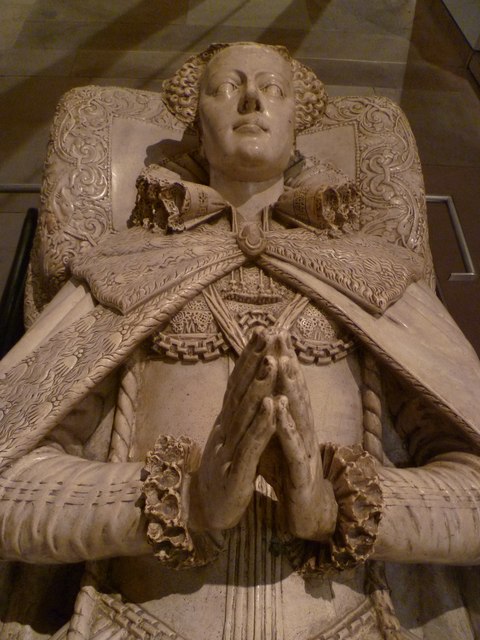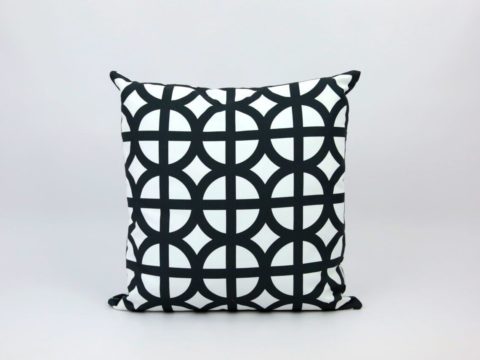Mary, Queen of Scots
The Baby Queen
Mary was born in Linlithgow Palace, some forty miles west of Edinburgh. Her mother had withdrawn there as her father, King James V marched towards yet another war with England. Mary was her parents' third child, but sadly, her two elder brothers had died within a day of each other in 1541. Her parents were only thirty, so might have been expected to have more children. Unfortunately, that was not to be.
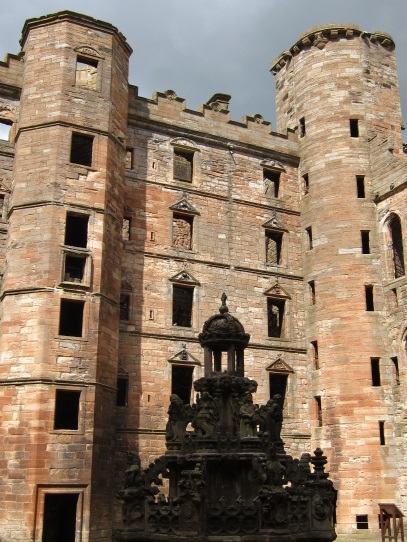
James V, heavily defeated at the Battle of Solway Moss, died when Mary was only eight days old. It was said he died of a broken heart, but the most likely cause was dysentery or another of the water-borne diseases that preyed on armies.
Allegedly, on hearing that his wife had borne a daughter, he let out a sigh and said "It cam wi' a lass, and it'll gang wi' a lass", alluding to the Stewarts' inheritance of the Crown of Scotland through a woman.
He could be quite sure that Mary's great-uncle, Henry VIII of England would not hesitate to over-run the country, once he himself was dead.
However, if James really made such a comment, he had reckoned without the fortitude, wisdom and sheer political skill of his wife, Marie of Guise. James, like his ancestors, had pursued the traditional Auld Alliance with France, in the hope of fending off his southern neighbour and had chosen a wife to strengthen the bond.
Marie was a French noblewoman from the powerful House of Lorraine. Previously married to the Duc de Longueville, she had left her son in the care of her mother, and made the long and dangerous trip to Scotland to marry James in 1537.
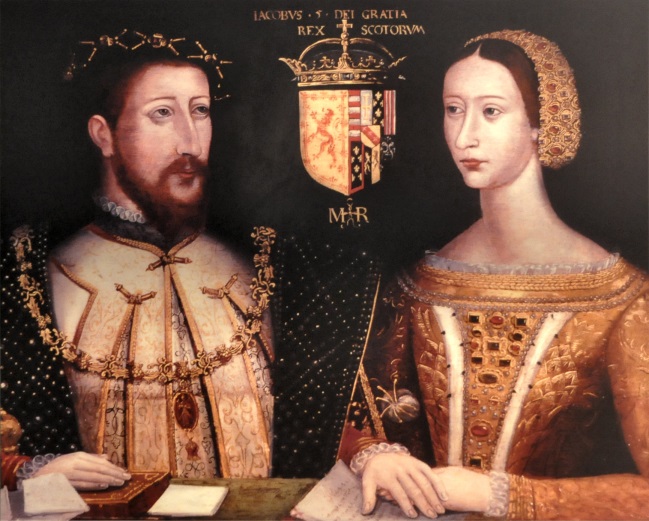
In the few years following Mary's inheritance of the Crown of Scotland, Henry VIII, scenting an opportunity to take total control of Scotland by forcibly marrying her to his son Edward, would try to follow up his army's victory at Solway Moss.
Initially, he tried diplomatic means. A brace of Scottish Lords had been captured after the battle, and he expended a good deal of charm and gold on them to persuade them of the benefits of a long-term alliance through the marriage of the baby Queen and Henry's own heir, Edward.
In addition, there had always been Scottish nobles who favoured alliance with England over France, and, as the Reformation that James V had held at bay began to creep into Scotland, their views became stronger.
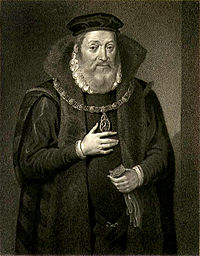
The majority of the Scots, however, and their French-born Queen-Dowager would have none of it. Marie was not appointed Regent, that honour fell to James Hamilton, 2 nd Earl of Arran, the young Queen's nearest male kinsman, but Marie knew how to play a long game, and, initially, spent her time working out the best way to keep her daughter safe.
France and England, Vying for Mary’s Hand
On 1 st July 1543, the Treaty of Greenwich, negotiated by Arran's supporters, who were seen as pro-English, was ratified by England. It provided for Mary to marry the English Prince when she was ten years old, although she was not to be taken out of Scotland before then. Arran, however, could not immediately persuade the Scots Lords to ratify it.
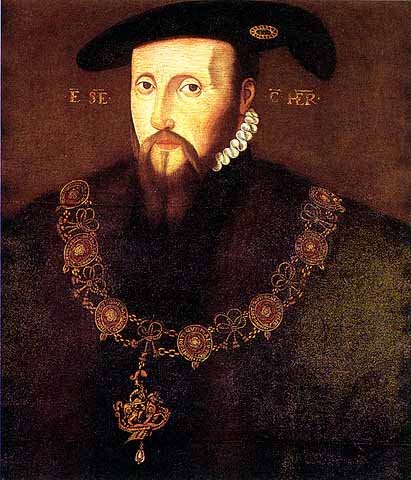
The war continued. Known as the War of the Rough Wooing, Henry sent wave after wave of troops, led by his brother-in-law, Edward Seymour, Earl of Hertford. Hertford scored some notable victories, including the burning of Edinburgh, and the massacre that was the Battle of Pinkie Cleugh in 1547, but had neither the money nor the men to undertake the wholesale occupation of the country needed to forcibly annex Scotland to England.
Meanwhile, Francois I of France, seeing the risk of Scotland slipping out of the French net, made a good deal of effort to encourage the Scots to continue their old friendship with France.
In this he was followed by his son Henri II, who succeeded him in 1547. With Henry VIII of England dead, and a minor on the throne, Henri II wanted to seize the opportunity to keep the Scots on-side.
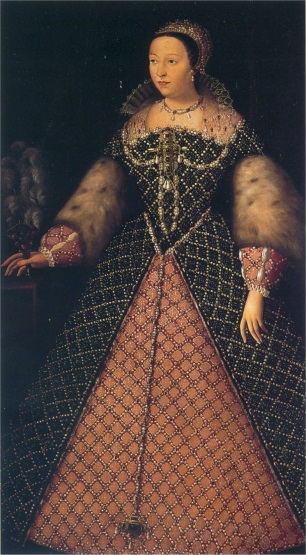
After bribing Arran with a French Duchy (that of Chatelherault) the Treaty of Haddington was signed in 1548 which agreed that Queen Mary would be married to his heir, the Dauphin, and be sent to France for her upbringing.
This latter clause was to keep her safe from the fears of English kidnapping, but also, from Henri's point of view, the best way to ensure she was brought up as a French partisan.
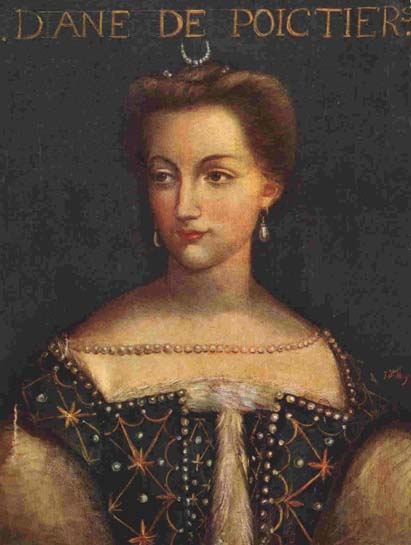
Aged just six, Mary sailed for France where she was brought up with her future husband and his siblings in the rather bizarre menage a trois of Henri II, his wife Catherine de Medici and his mistress, Diane de Poitiers.
Queen of France
Mary received the education of a Renaissance princess, largely concentrated on languages music and dancing. She continued to speak Scots, but French became her most fluent language. She also studied Latin, Italian and Spanish. Her upbringing was intended to fit her for her role as Queen Consort of France, rather than Queen of Scots. It was envisaged that her own country would be ruled for her by French regents.
Unsurprisingly, back in Scotland, there were many nobles unhappy with this arrangement – not least Mary's older half-brother, James Stewart, Earl of Moray. However Marie de Guise had eventually out-manoeuvred Arran and was appointed Regent on 12 th April 1554.
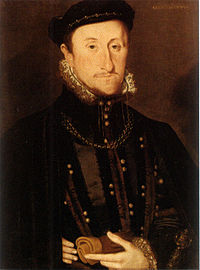
Marie was capable and effective, but she was also firmly Catholic, surrounded by Lords who were increasingly committed to the Protestant Reformation, which had come to Scotland largely due to the efforts of John Knox.
This charismatic preacher had influenced a swathe of the upper classes, who formed themselves in 1557 into the Lords of the Congregation, with an agenda to bring Scotland into the Protestant fold.
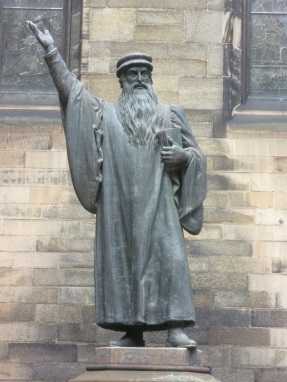
Marie de Guise was not inclined to persecution, and wanted support for her policies. However in 1558, when Elizabeth I inherited the English throne and began to pursue a moderate Protestant policy, it became apparent that the Lords of the Covenant might have an alternative to French domination. Marie's attitude hardened, but she was forced to agree to the Articles of Leith in 1559, promising religious toleration.
Meanwhile, Mary had been married to the Dauphin Francois on 24 th April 1558. She and her husband were encouraged by Henri II to claim the crown of England, on the death of Mary I of England. In Catholic eyes, the new English Queen was illegitimate.
Mary and Francois quartered their arms with English arms and had used the style of King and Queen of Scots and England. Before long, they were to be King and Queen of France, too. Henri II died in 1559 and Francois and Mary began their reign.
Before they could really establish themselves, Francois died, and by the end of 1560, the widowed Mary was no longer welcome in France. Her mother-in-law, Catherine de Medici was determined to control the new king, the 10 year old Charles IX, and to remove the influence of Mary's Guise relatives.
Triumphant Return to Scotland
It was an opportune time for Mary to return to Scotland. Marie de Guise had died in June 1560, and the government was in the hands of Mary's half-brother, James Stewart, Earl of Moray. Moray had negotiated the Treaty of Edinburgh, which acknowledged Elizabeth's position as Queen of England, agreed the withdrawal of French troops from Scotland and supported the Anglo-French peace negotiated by the Treaty of Cateau-Cambresis of 1559. Francois II had accepted this, but Mary had never formally ratified the treaty.
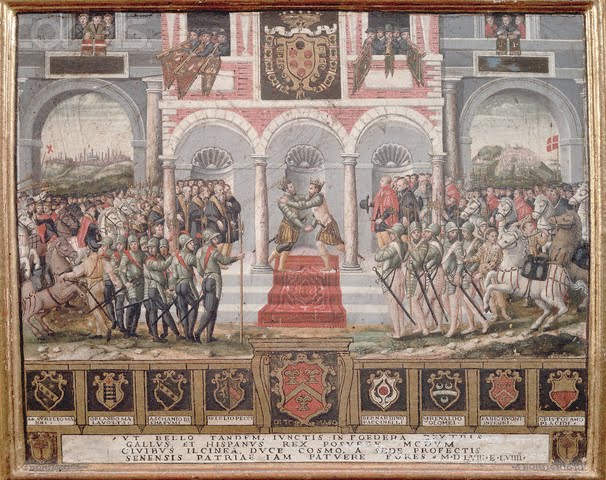
With matters somewhat calmer in Scotland, Moray invited Mary to return, and she was glad to do so, on the understanding that the legislation of 1560 that had made Scotland a Protestant country would be left in place, but that she could continue in her Catholic faith, privately.
Mary, having been refused a passport to travel through England, sailed back into Leith, amidst appalling weather. At the age of eighteen, she was confronted with ruling a country that was poor, factious, religiously divided, and with a neighbour in Elizabeth who entertained the deepest suspicions of Mary's motives.
Nevertheless, things began promisingly. Her subjects were delighted with her youth and beauty. Mary was not a woman to be dogmatic or over-bearing, and was willing to learn from Moray and other senior statesmen. However, this did not mean that she would be their puppet.
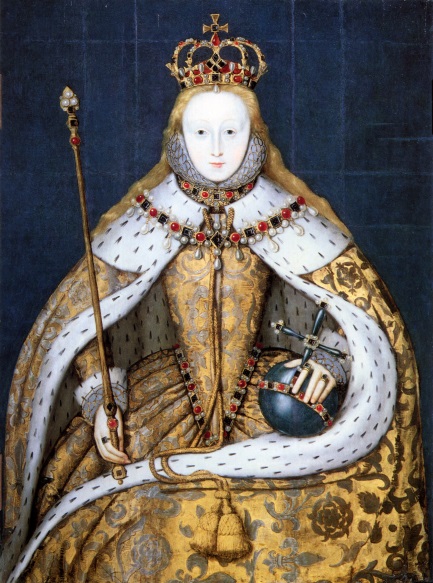
A pro-English policy had been settled on by the Lords, and Mary was willing to go along with this, trying to build a diplomatic relationship with her cousin Elizabeth, and to back off from her assertion that she was England's rightful queen, in return for acknowledgment of her status as Elizabeth's heir.
Despite Mary's best efforts, Elizabeth would make no such acknowledgement, claiming that until Mary ratified the Treaty of Edinburgh, nothing could be done.
Mary's upbringing in France, a highly centralised and authoritarian monarchy had ill-prepared her for the realities of the Scottish situation. In an effort to calm the troubled religious waters, she met John Knox, to persuade him that inciting rebellion was a crime.
She was astonished to be told, in very forthright language, that rebellion against a Catholic monarch was a Christian's duty. Nevertheless, she continued to pursue religious toleration, even going along with Moray's vendetta against the Catholic Earl of Huntly, leading out her troops in person.
A Bad Choice
Almost as soon as she had been widowed in 1560, Mary had been considering remarrying. She needed an heir, and she also wanted the emotional, moral, and hopefully, military, support of a husband. The difficulty was that, in a male-dominated world, her husband would become King of Scots.
Her initial choice had been Don Carlos, son of Philip II of Spain. She was refused, fortunately, as Don Carlos was mentally unstable to put it mildly. Elizabeth offered her the hand of Elizabeth's own favourite, Robert Dudley, Earl of Leicester. Mary was disgusted and offended at the suggestion she should marry her cousin's cast-offs. In any event, her thoughts had turned elsewhere.
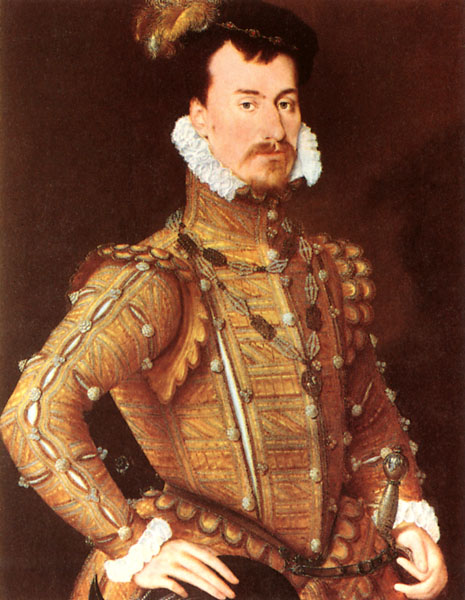
Henry Stuart, Lord Darnley, was Mary's half-cousin, both being grand-children of Margaret Tudor, Queen of Scots. His mother, Lady Margaret Douglas, had been brought up mainly in England and had been a close friend of Mary I, although was on rather poor terms with Elizabeth. His father, Matthew Stuart, 4 th Earl of Lennox, also had a plausible claim to be Mary's heir, rather than Arran.
To marry Darnley would combine their claims to the English throne, and secure the Scottish throne more effectively. In addition, Darnley was the right age, handsome, charming and accomplished. It seemed to be a match made in heaven. Mary was enchanted and married him out of hand on 29 th July 1565. She was in too much of a hurry even to obtain the necessary Papal dispensation.
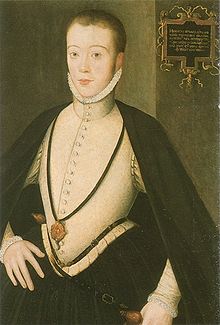
Elizabeth claimed to be furious although a plausible case can be made for her having deviously engineered the match – she probably knew more about Darnley's character than Mary had had the opportunity to discover. Good on paper, the marriage was a disaster.
Darnley was spoilt, drunken, probably syphilitic and bisexual. He dreamed of power, without the ability to use it effectively and Mary repented her marriage within a very few months. Darnley did, however, perform his main duty as a husband. Mary was pregnant within three months.
Assassinations
Moray was not pleased by this Catholic newcomer ousting him from his role as the Queen's right-hand man. He and other senior Protestant Lords rebelled, and attempted to take Edinburgh. Mary speedily gathered her forces and, in what became known as the Chaseabout Raid, chased Moray and his colleagues around Scotland, without the two sides ever coming to blows.
Moray retreated to England, and Mary increased her number of advisers, bringing in both Catholics and Protestants to her Privy Council.
Darnley, rather than supporting his wife, was demanding the Crown Matrimonial – this would not only have made him King of Scots in fact, as well as in name, but would have allowed him to continue as monarch during his life-time, even if Mary pre-deceased him. Mary was no more keen than Elizabeth to create a situation where her death would be to her heir's advantage, and robustly refused.
He raged and sulked, and, eventually, conspired with the rebellious Protestant Lords to capture Mary and assassinate her secretary, David Rizzio, of whom he was jealous.
Darnley and his men burst into Mary's apartments at Holyrood Palace, dragged Rizzio screaming out of the room and stabbed him to death. Mary was restrained by her husband, whilst a loaded pistol was pointed at her heavily pregnant belly. The following twenty-four hours show Mary at her best. Locked into her apartments with Darnley, she persuaded him that his co-conspirators would turn their attentions to him next and they hatched an escape plan.
A message was smuggled out to her supporters to have horses brought, and she and Darnley found a way out of the palace. They took the horses, and fled into the night. Before long, Mary was back in control. On 19 th June 1566 she gave birth to a healthy baby boy.
She still had the liability of Darnley to deal with. She contemplated annulment, on the grounds that there had been no dispensation for their marriage, but that would have affected the prince's legitimacy. Her Lords were equally tired of him.
No-one knows for certain who was responsible, but it may be inferred that there was a plot to dispose of Darnley and that Mary preferred not to know about it. So far, so traditional. Mary effected a reconciliation with Darnley, and encouraged him to return to a house at Kirk O'Fields, Edinburgh, where she nursed him through a bout of illness. One evening, she left him in his sickbed to go to a wedding party.
Much to everyone's astonishment, his house blew up in the middle of the night and his body was found in the garden, with no evidence of the explosion – he had been suffocated.
Misjudgements
The correct course of action for Mary to take, would have been to express horror, dress in mourning, find some scapegoats and hang them. What happened, in fact, is that she was seen frequently with the prime suspect, James Hepburn, 4 th Earl of Bothwell, and supported him when he was accused of the murder.
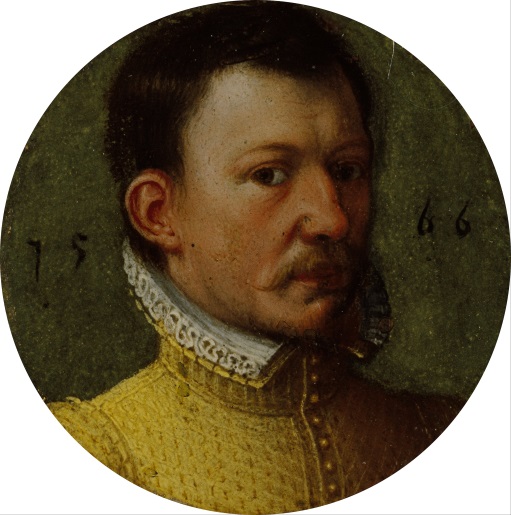
No steps were taken to find out who had been responsible until, eventually, Darnley's father, the Earl of Lennox, managed to bring a prosecution against Bothwell. Ignoring all of the advice she received, Mary made her support of Bothwell plain and he was acquitted.
In April 1567, Mary went to Stirling to visit her son. On her way back to Edinburgh, Bothwell abducted her, and allegedly raped her. Whoever had been responsible for the murder, the Lords now backed off from the Queen. Instead of having Bothwell arrested and punished, she married him. This was too much for the public, and the Protestant Lords to bear (although Bothwell was also a Protestant).
Armies were raised, and faced each other on 15 th June 1567 at Carberry Hill. Mary surrendered, sending Bothwell for help. He reached Scandinavia, but was arrested and held in prison for the rest of his life.
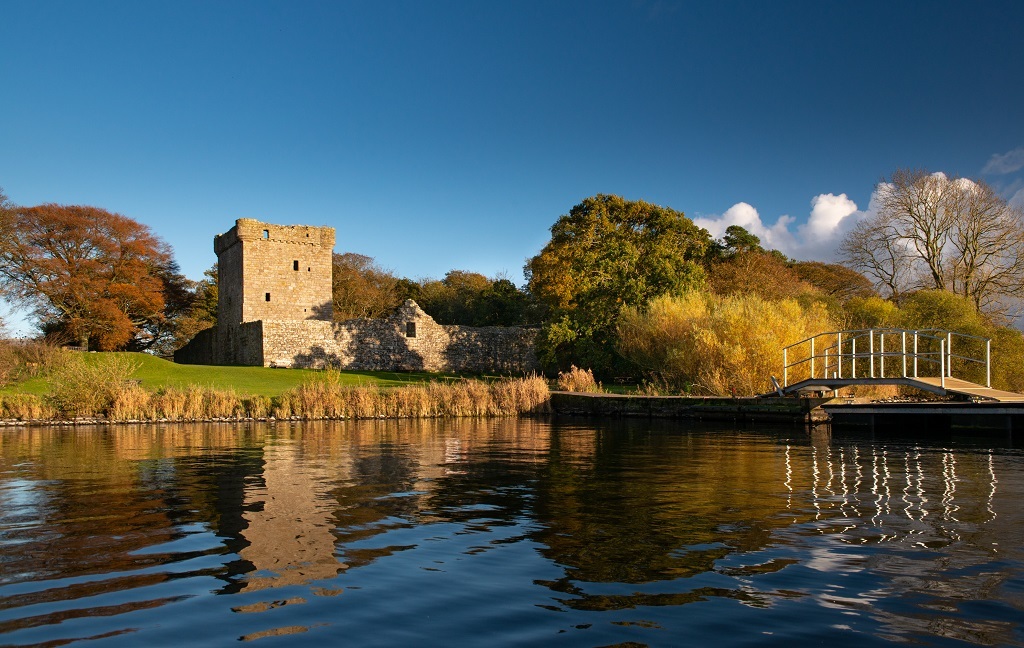
Mary, paraded through the streets of Edinburgh as murderess and whore, was imprisoned at the island fortress of Lochleven. Not long after, she miscarried of twins. On 24 th July, a delegation came to Lochleven to force Mary to abdicate in favour of her son, James, now proclaimed James VI.
Resourceful and charming as ever, Mary managed to persuade someone to help her escape to raise another army but she was defeated in the field at Langside.
At this point, she made another dire mistake. Instead of taking ship for France, she galloped over the English border, believing her sister Queen would help her.
Captive Queen
Elizabeth and her lords snapped the trap shut. Mary was incarcerated in honourable confinement, allegedly until she could prove her innocence of the murder of Darnley. A tribunal was held at York, to investigate the death of Darnley, but Mary refused to acknowledge its jurisdiction. She was a Queen, and not a subject of England.
The evidence presented (sent by the Earl of Moray, now Regent for James, amidst serious opposition) consisted of the documents known as the Casket Letters. The Casket Letters contain various documents purporting to be from Mary to Bothwell, together with sonnets and marriage contracts. Mary said they were forgeries, and that her writing was not hard to imitate.
The documents were later destroyed, and the available copies have been read in different ways by historians – some believing them genuine, others that they were forgeries, and some that parts are genuine with forged interpolations.
The tribunal came to no conclusion, which suited Elizabeth well. She neither wanted Mary convicted, because she could not countenance a sovereign being deposed and executed, nor acquitted, as she might then have to support Mary in her bid to reclaim the Scottish throne.
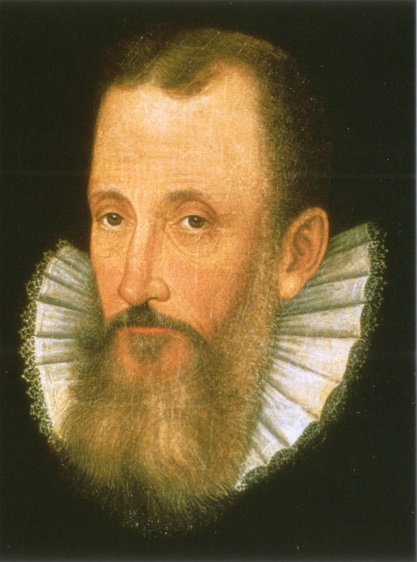
For the next twenty years, Mary was moved around the various great houses of the Midlands of England, under the guardianship of George Talbot, 6 th Earl of Shrewsbury, and later, Sir Amyas Paulet. During these years, she lived comfortably enough, her dower as Queen of France was paid regularly, and she had the company of Shrewsbury's wife, the formidable Bess of Hardwick.
Together the women sewed and gossiped (examples of their embroidery may be seen at Oxburgh Hall), although they eventually fell out, with Bess accusing her husband of being in love with Queen Mary.
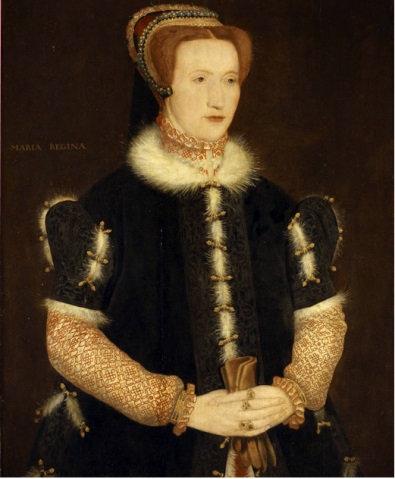
Shrewsbury, in fact, was miserable. Elizabeth refused to pay all of the costs of Mary's incarceration and he was obliged to foot much of the bill himself. In addition, he was personally responsible for a woman who was known for her ability to charm her way out of tough situations – if she escaped, Shrewsbury would undoubtedly pay with his head.
His fears were justified. Mary made every attempt to escape, becoming involved in a number of plots against Elizabeth. From Mary's perspective, this was entirely justified. She was being held against her will and she had warned the English government that
"If I shall be holden here perforce, you may be sure then, being as a desperate person, I will use any attempts that may serve my purpose, either by myself or by my friends."
“In my end, is my beginning”
Over the years, the Rebellion of the Northern Earls, the Ridolfi Plot, the Throckmorton Plot and finally, the Babington Plot, attempted to free Mary and to place her on the throne.
The plots were variously backed by France and Spain, and, perhaps, in the case of the Babington Plot, actually fomented by the English Government to entrap Mary. In the latter case, letters were smuggled in and out in the bungs of beer barrels supplied by a local brewer. He was being paid both by Mary's supporters, and by Sir Francis Walsingham, Elizabeth's Secretary of State and Spymaster, and the letters were copied.
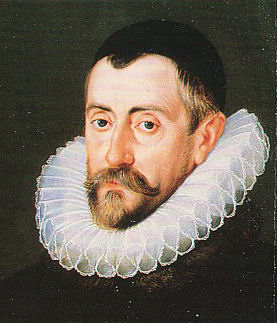
Finally, Mary responded to one in which a plan for Elizabeth's assassination was explicitly stated. She did not demur at such a step, and this was sufficient for Sir Francis and his ally, William Cecil, Lord Burghley, to press Elizabeth for a trial.
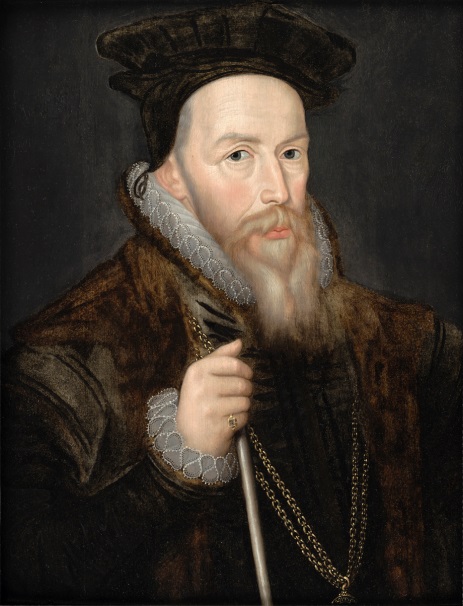
Mary was tried, and convicted of treason at Fotheringhay Castle, Suffolk on 25 th October 1586. She had been tried by 38 nobles, of whom only one dissented, although Mary had pointed out the flaws in the process, and, again, reiterated that as she was not a subject of England, could not be guilty of treason.
England was in a defensive state – the threats from Spain were increasing, and it was known that Philip II was planning a naval invasion – it was imperative that there be no Catholic heir that he could use to replace Elizabeth.
Elizabeth's ministers begged her to sign the death warrant. She was extremely reluctant, partly because of the bad example it would set, if an anointed queen were to be executed, and partly, no doubt because she tended to be reluctant to shed blood.
Eventually, she signed it, then immediately prevaricated, and attempted to recall the warrant, but it was too late. Mary was executed at Fotheringhay on 8 th February, 1587.
Her body was initially laid to rest at Peterborough Cathedral, alongside that of Katharine of Aragon, despite her request to be returned to France.
In 1612, her son, James VI and now James I of England, had her re-interred in Westminster Abbey, in the Chapel of her great-grandfather, Henry VII.
